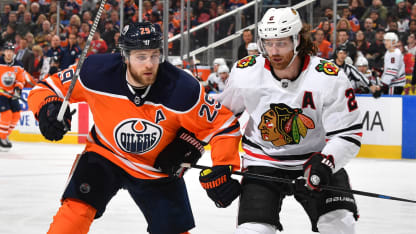Perhaps coach Dave Tippett's biggest accomplishment this season was helping the Oilers finish with the second-best penalty kill in the NHL at 84.4 percent (San Jose Sharks, 85.7) after finishing 30th last season at 74.8. So what changed? Edmonton's leaders in shorthanded time on ice were forwards Riley Sheahan (154:53) and Josh Archibald (141:37), who each was signed as a free agent last offseason. It's no surprise that Klefbom (154:16) and Darnell Nurse (144:28) led Oilers defensemen in shorthanded time on ice, but it is worth mentioning rookie Ethan Bear was third at 132:17, which also led NHL rookies. For Chicago, which tied the Calgary Flames and Pittsburgh Penguins for the eighth-best penalty kill (82.1 percent), goalie Corey Crawford had an .852 save percentage against opposing power plays, which was 38th in the League (minimum 20 games played), compared to Robin Lehner, who was second in the NHL at .918 (Martin Jones, Sharks, .918). The Blackhawks traded Lehner to the Vegas Golden Knights on Feb. 24, leaving Chicago to rely on Crawford. The good news for Chicago is that this season seems to be an anomaly for Crawford, who has an .870 save percentage since 2010-11 when facing opposing power plays. If the Blackhawks get slightly better goaltending from Crawford when shorthanded, it could help reduce the gap between the two penalty-kill units.

